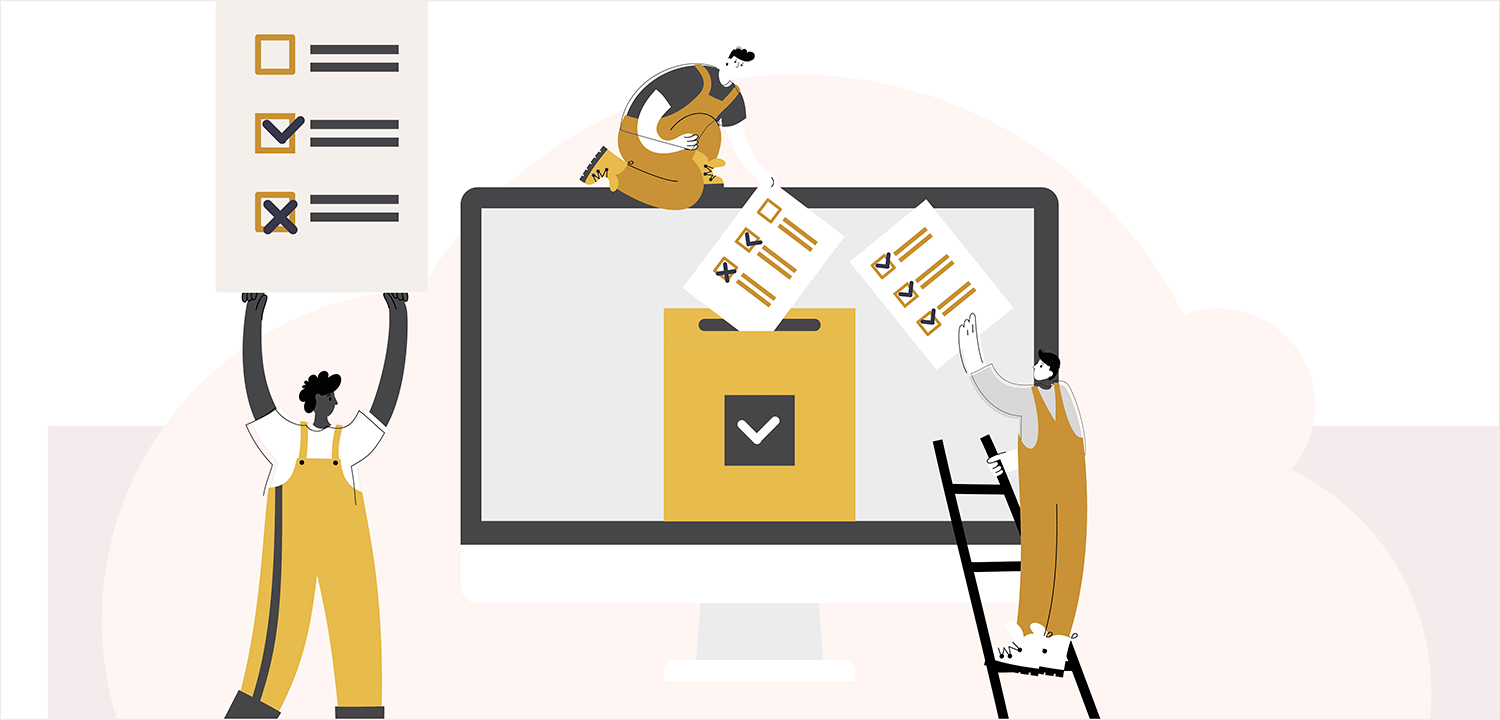Most employees find it challenging to do their best work when they’re disconnected from the organisations they work for. Employee surveys help establish a speak-up culture and facilitate important conversations between employers and employees.
According to Infinity Research, employee surveys are becoming less effective and less popular. But since employee surveys are such an essential part of the feedback mechanism in the workplace, why are we witnessing such a drop in their perceived value?
Numerous factors affect the smooth functioning of employee surveys. Besides survey fatigue and inconvenient survey delivery methods, there are also some design flaws that hinder the quality of employee surveys.
Let’s look at six measures we can use to improve the effectiveness of employee surveys, to keep the employees actively engaged with the management:
1. Run quarterly surveys
One survey in 12 months is simply not enough. It’s really unlikely that employees can remember what happened way back at the start of the year and by running surveys annually you’ll likely find their answers are skewed to their more recent, salient experiences.
Run quarterly surveys instead, and you’ll have much more accurate data. Even better, you can actually witness the actions you take translating into employee feedback, giving you a much better sense of which initiatives are working, and which need a rethink.
2. Set up leader lunches
Enabling different employee tiers to mingle and share honest feedback confidentially is a great way to close communication gaps. Organise monthly sessions for leaders to sit and have a friendly chat with their employees to resolve complex issues.
These ‘leader lunches’ are great for removing hierarchy and opening dialogue between leadership and the rest of the business. Leaders become more approachable, and employees who don’t usually get one-on-one time with management feel more engaged and more valued.
More generally though, it’s simply good for employees to be able to put a face to the names of the people who are tackling the issues they raise.
3. Take the employee pulse
A staff pulse survey is a short survey sent out regularly to check in with employees about their job satisfaction, work environment, how they feel about communications, and so on.
They tend to work better than the annual surveys because they’re so quick to fill out, meaning tend to have a much higher completion rate than giant annual employee engagement surveys.
Just be aware that there’s such a thing as sending pulse surveys too often. After all, filling out pulse surveys every other week can get annoying for the employees. So best to keep them, short, concise, and quarterly.

4. Organise HR hackathons and shadow boards
This is going to be one for the brave, but it can be really powerful. HR Hackathons bring together HR professionals, developers, HR tech experts, and design-thinking facilitators to prototype new ways to boost employee engagement and the effectiveness of employee surveys – throwing up far more ideas than if any one team worked on employee engagement alone.
Another new way to enhance employee engagement is to organise a “shadow board” – a group of junior employees who work with senior executives to find new ways to improve the company’s working practices.
Done well, both are fun and effective way to use cross-functional skills to improve employee engagement.
5. Upgrade your HR technology
The tools you use to analyse survey results also make a difference. Research by Sierra-Cedar suggests that 45% of large businesses and 51% of medium-sized companies are increasing their spend on HR technology. Fosway Group, Europe’s top HR industry analyst, indicates that 68% of companies intend to increase their investment in such tools and technologies between 2020-2023.
By using more advanced software, you can generate more accurate, and more detailed reports about your surveys, as well as how they shift over time. It’s likely we’ll see this kind of data crunching expand into automation, machine learning, artificial intelligence in the workplace over the next few years too. Luckily 52% of HR organisations are already preparing for this major tech-change.
6. Finally, be completely transparent
Once you’ve collected your data, you’ve crunched it, and run you’ve every report on it you possibly can – share it.
Being transparent about your efforts will help you build greater trust with your employees and you might find it generates new and innovative ideas from enthusiastic people who want to be part of improving your working culture.
That’s why it’s essential for the HR team to circulate regular status updates, recommendations and analysis.




